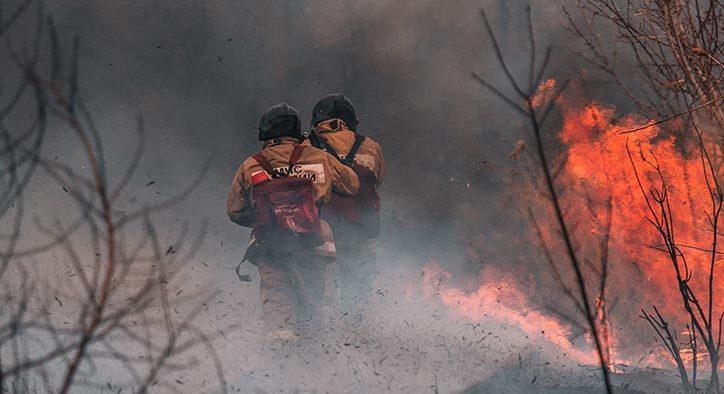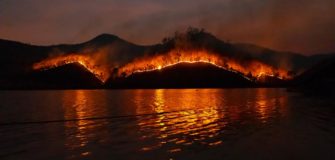Philanthropic organisation Minderoo Foundation launched the Healthy Landscapes Mission, a program that aims to halve the risk that fire and flood disasters pose to the environment, wildlife and communities in Australia’s 50 most vulnerable regions by 2025.
The Healthy Landscapes Mission highlights critical gaps in information about local landscapes – crucial data on native wildlife, fuel loads and ground characteristics that impact the severity and likelihood of fires and floods.
It also sets out to change that by incorporating the recommendations outlined in the Royal Commission into Natural Disasters. These include gaining a better understanding of environmental assets such as flora and fauna, measuring and reducing fuel loads and implementing cultural land management techniques used by traditional owners.
Chief Executive of Minderoo Foundation’s Fire and Flood Resilience initiative, Adrian Turner, said the Healthy Landscapes Mission aims to make landscapes more resilient, saving lives and creating new economic value.
“Local knowledge and technology will play a key role in understanding the relationship between different landscapes and their risk of fires and floods. This will help to inform more targeted land management practices such as where to clear fuel loads and what types of plants can aid as natural fire retardants,” Turner said.
3 Key Areas
The Mission will focus on three key areas of intervention and solutions.
The first area is Landscape Knowledge. In this area, Minderoo will conduct research to understand flora and fauna needs before, during and after a disaster to inform resilience planning.
Next is Landscape Action, which involves measuring and applying locally adapted land management practices which further build local knowledge and skills and create an evidence base.
Last comes Landscape Investment. This area uses ground sensors, drones, aerial and satellite technologies to measure how landscapes respond in real-time in greater detail. By identifying the natural capital of the landscape this will attract investment to protect these valuable assets.
The Healthy Landscapes Mission is the second part of a plan launched in September to lift resilience so fires and floods don’t become large scale disasters. The first Mission, Fire Shield, also launched in September, aims to extinguish dangerous fires within an hour by 2025 and relies on knowledge of terrains and wildlife to inform where firefighting assets are pre-positioned to achieve this goal.
The Royal Botanic Gardens & Domain Trust and the Australian Institute of Botanical Science are partnering with the Minderoo Foundation to support ambitious programs to conserve Australia’s flora.
“As fires, droughts and other devastating events in Australia have exemplified, protecting plants is critical and we welcome the opportunity to bring our world-leading botanical research to this important mission to invest in effective conservation solutions,” Chief Executive of the Botanic Gardens and the Australian Institute of Botanical Science, Denise Ora, said.
“We also recognise that our understanding of plants and their environment is informed by thousands of years of knowledge generated by First Nations people. Our aim is to generate science that will continue this connection with country to promote a broader appreciation of Australia’s unique flora,” she said.
Natural capital investment
A major component of the Mission is natural capital investment, which involves financially measuring what different aspects of a landscape. This includes as trees and waterways, and aim to encourage more investment to future proof the environment against disasters while protecting our biodiversity.
Using the latest artificial intelligence and drones, Australian start-up Dendra Systems will measure different characteristics of landscapes to determine how they are regenerating. It will be looking at areas such as soil moisture and erosion, invasive species such as weeds and the amount of fuel load.
Dendra Systems CEO Susan Graham said the company is conducting aerial seeding to replant entire regions of damaged land.
“Being able to measure landscapes in more detail is a key part of the mission, as it enables us to determine where to invest in restoration and the value you get from doing that. Aerial seeding can be done quickly and at scale in a way that’s much more effective than having boots on the ground,” Graham said.
Federal Environment Minister Susan Ley welcomed the announcement of the new Mission, stressing the importance of partnerships and shared knowledge in understanding Australia’s unique environment.
“We can all play a role in protecting our environment from the threats of natural disaster and in building its overall resilience. I am pleased that my Department is working with Minderoo Foundation on these important issues and linking the work of our range of programs, including the Environment Restoration Fund, Threatened Species and $200 million Bushfire Recovery Funding,” Ley said.
Paulo Rizal is a content producer for Third Sector news. He has working experience in journalism, SEO, and social media marketing.


































































































































































